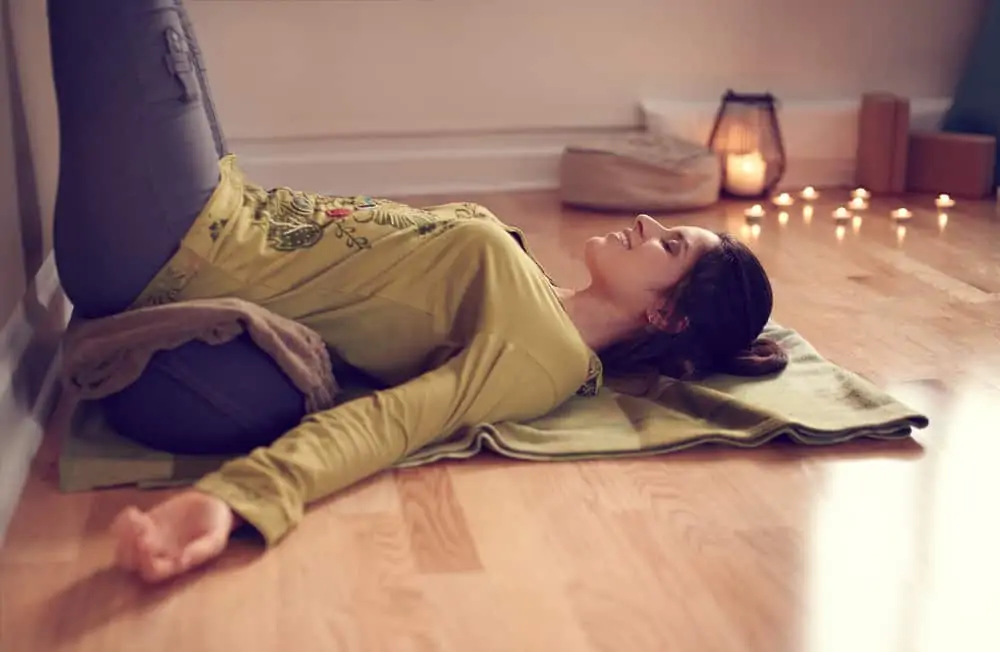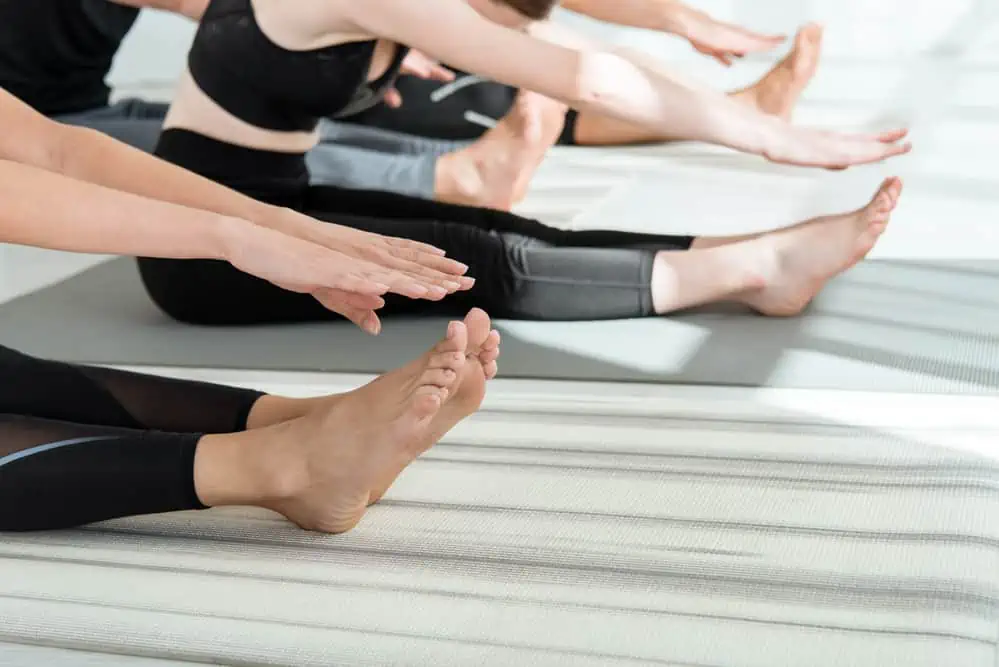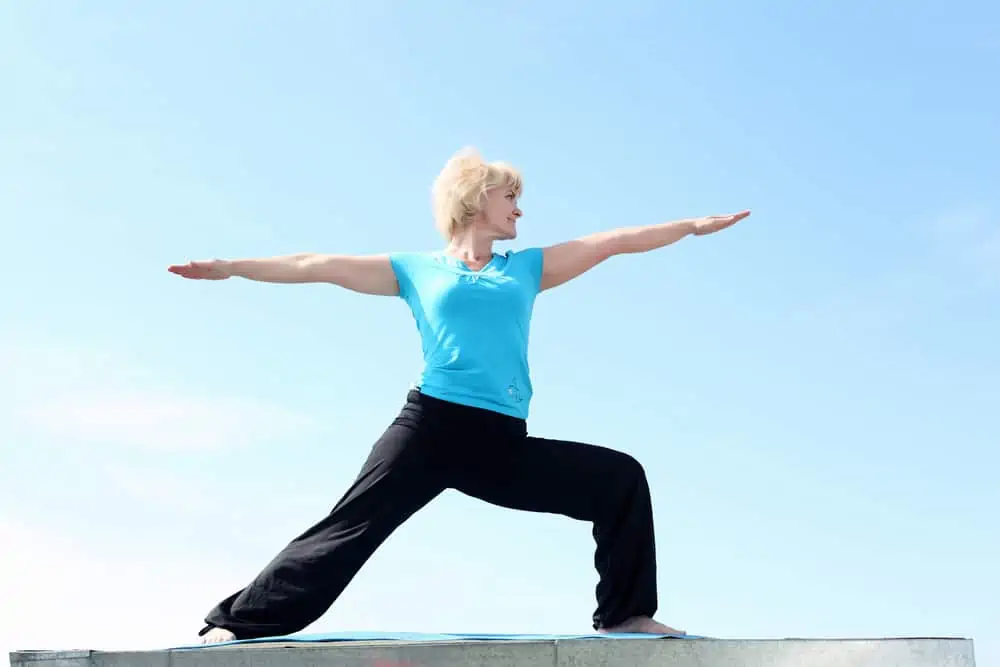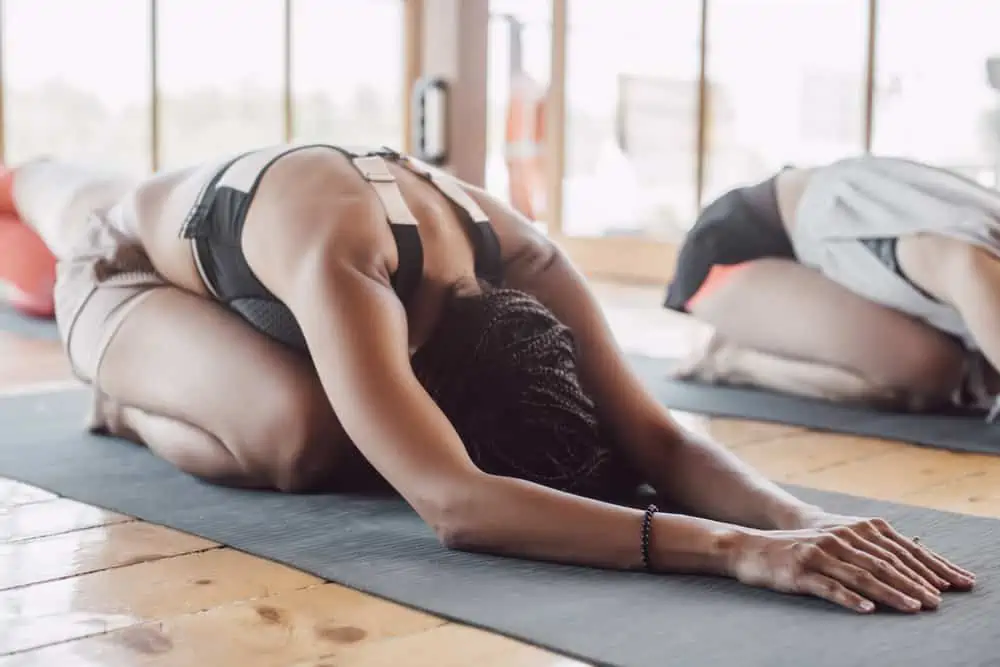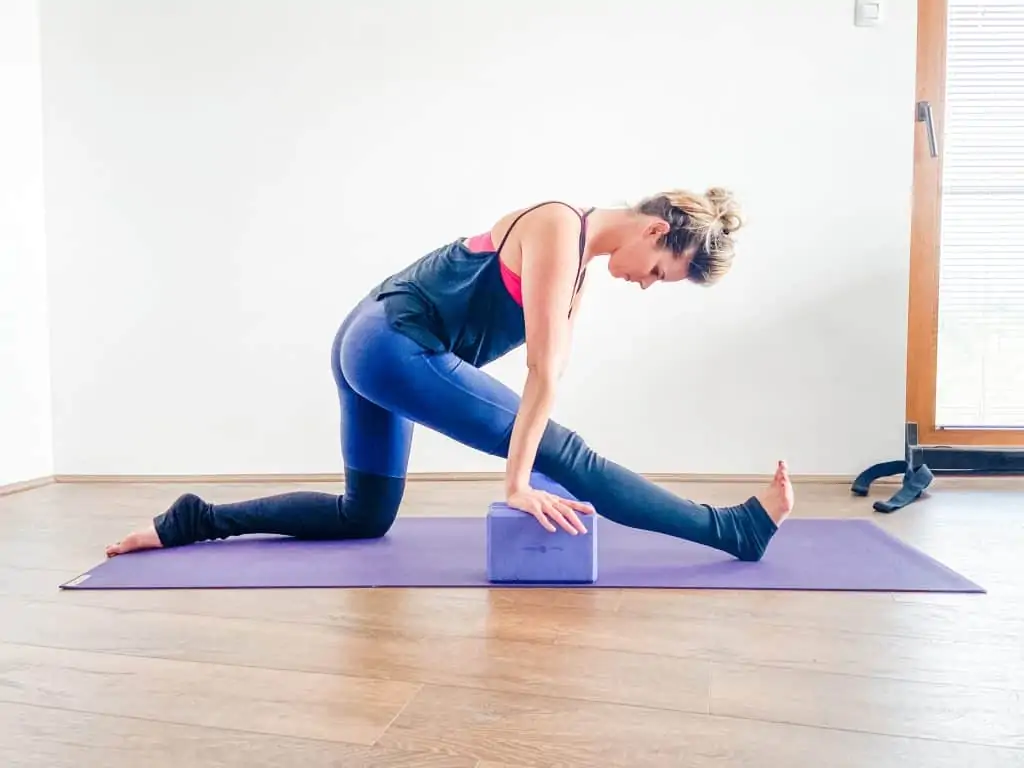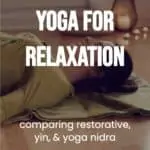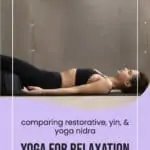This page contains affiliate links. I’m part of the lululemon collective and will receive a commission if you make a purchase through the links below. As an Amazon Associate, I earn from qualifying purchases. Read the full disclosure here.
Each yoga practice is unique, and there are many different styles to suit your personality and mood.
Despite what social media and mainstream culture might have you think, anyone can do yoga.
Of course, yoga poses are only a tiny part of a yoga practice.
You don’t have to stand on your head or attend a sweaty power yoga class. You can lie peacefully on a bolster, and it’s still yoga.
In western culture, yoga is mainly thought of as just another workout.
While yoga does have physical benefits, many would argue that the benefits beyond the physical are even more critical.
Some styles of yoga lend themselves to supporting stress relief and relaxation, something our culture simply doesn’t get enough of.
Today we’ll explore restorative yoga vs. yin yoga to support relaxation, plus a bonus look into yoga nidra.
Disclaimer: This content is for educational purposes and is not medical advice. Read the full disclaimer.
Why it’s important to incorporate relaxation
If you’re thinking, “I’m busy, and I don’t have time to relax,” then this section is for you.
In our instant gratification, “I want it done yesterday”, over-work glorifying society, there’s a lot of talk about self-care and relaxation but very little encouragement of actually taking the time to do it.
This constant “on” state can keep us in fight or flight mode much more often than we should be.
Constant stress can lead to high blood pressure, fatigue, burnout, difficulty sleeping, difficulty with weight management, and many other health problems.
It may seem counterproductive, but strategic relaxing can make you more productive.
Slow practices that focus on deep breathing and relaxation can support general well-being and healing from injuries.
The best part is that you don’t have to set aside a full hour for these practices to see benefits.
Even just 15 minutes can go a long way.
Moszeik et al. studied the effectiveness of an 11-minute Yoga Nidra meditation on sleep, stress, and overall well-being in a busy population. The study found that even just a short time period of Yoga Nidra can yield a positive effect.
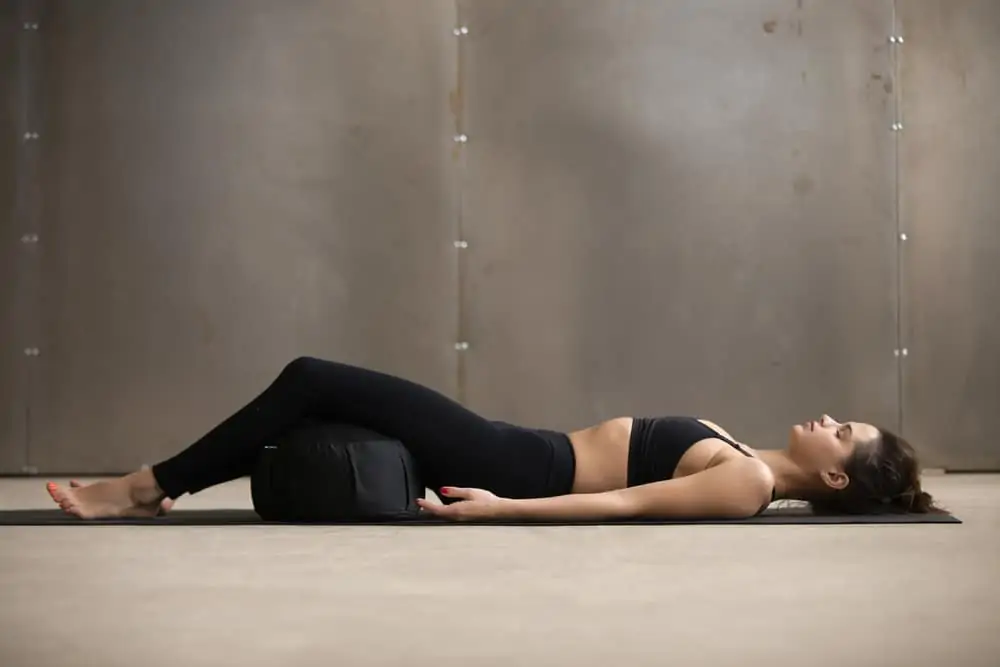
Restorative yoga
Restorative yoga emphasizes relaxation and grounding by supporting yourself with props in very comfortable positions.
The goal is to decrease sensation, support relaxation, energy flow, and healing.
Each restorative yoga pose is held anywhere from 10-30 minutes. A restorative practice can consist of anywhere from one to 4 poses.
Some popular restorative poses are:
- Legs up the wall or supported by a chair or bolster
- Reclined butterfly
- Mountain brook
- Child’s pose
Many restorative poses are accessible and can be modified with props to support your posture perfectly.
As long as positions aren’t violating any injury contraindications, restorative yoga can be helpful in the healing process.
Props for restorative yoga
While it’s not necessary to invest in props, blocks, yoga blankets, and bolsters can significantly enhance a therapeutic practice and provide proper support for complete relaxation during poses.
Pillows and blankets from around the house can also be used.
For an even more relaxing experience, try adding an eye bag. The gentle weight of the bag can help block out distractions and soothe facial and eye muscles.
If you’re brand new to yoga, check out this 7-piece starter kit from Clever Yoga.
Where to find restorative yoga
Check local yoga studios for restorative practices. You can also check with gyms that offer yoga; however, finding restorative yoga at a mainstream gym is less common.
Yoga apps such as Yoga Download offer restorative yoga in addition to a variety of other styles.
Save 50% off Yoga Download Monthly Online Yoga Packages here.
You can also find restorative yoga on YouTube. Check out Jessica Richberg’s channel with lots of restorative options.
Restorative yoga vs. Yin yoga
Restorative and Yin are often confused, but in reality, are very different practices with different goals.
Yin Yoga is a slower-paced style of yoga. The name, Yin, comes from the Chinese philosophy of Yin and Yang.
According to this, Yin tissues are plastic (e.g., fascia, ligaments, joints), and Yang tissues are elastic (e.g., muscles and tendons).
Poses may also be connected to energy meridians and the chakras.
In theory, Yin Yoga targets the plastic tissues of the body.
Since fascial tissue is intertwined throughout the body, it’s obviously not so black and white (for example, only moving the fascia and not the muscles), but when heat gets involved, it does change the elasticity and flow of certain tissues and fluids.
To further target the plastic tissues, Yin Yoga is performed “cold,” meaning without activity beforehand like Vinyasa, Ashtanga yoga, or other exercises.
It’s popular to see “Vin to Yin” yoga classes. While this is a cutesy rhyming marketing technique, it actually goes against the traditional theory of practicing cold.
Yin poses are held for 2-5 min with some gentle movement transitions in between.
Tissues of the body need appropriate stress forces to remain strong and to heal from injury. Holding poses for 2-5 minutes provides some stress to these tissues.
With restorative, the goal is to decrease sensation. In yin, we want to feel the sensation.
When you release a pose, you might feel a flood of sensation to the area.
Yin Yoga may be beneficial 1-2 times per week but is not be suitable for everyone.
Yin may present a risk during pregnancy, for those with connective tissue disorders, hypermobility, osteoporosis, and recovering from injuries.
Props for yin yoga
Because poses are held for a few minutes, props can help with support for injury prevention.
Yoga blocks, blankets, straps, and bolsters can improve accessibility to poses and allow you to feel some sensation without pushing your body over the edge and risking injuries.
You might also like to read How To Use Yoga Blocks To Prevent Injury for new ideas on an old favorite prop.
Where to find yin yoga
Many yoga studios offer yin practices. However, I have not seen any mainstream gyms offering this style of yoga.
Yin yoga can be found through Yoga Download and Gaia Yoga apps.
Save 50% off Yoga Download Monthly Online Yoga Packages here.
Yoga with Kassandra on YouTube also has a wide variety of yin and vinyasa-style yoga.
Yoga Nidra
Yoga Nidra requires no physical movement and is gaining popularity in mainstream yoga studios and online offerings.
Yoga Nidra is the yoga of sleep; only you’re in a state of consciousness between wake and sleep.
Have you ever heard that your body knows what you’re feeling before you know what you’re feeling?
This style of yoga helps to down-regulate the central nervous system for deep relaxation.
Yoga Nidra typically starts similar to a guided meditation and then progresses through a guided rotation of consciousness incorporating various energetic levels of the body (physical, mental, emotional, etc.)
Several studies have shown positive results in reducing the cognitive and physical symptoms of stress and anxiety.
One important note is that there are a few different styles of Yoga Nidra.
Some use visualization techniques and polarization of opposites. Some examples can be disturbing and not for everyone, so I recommend starting with a gentle yoga Nidra. (Examples provided below.)
Find the style of Yoga Nidra that speaks to you.
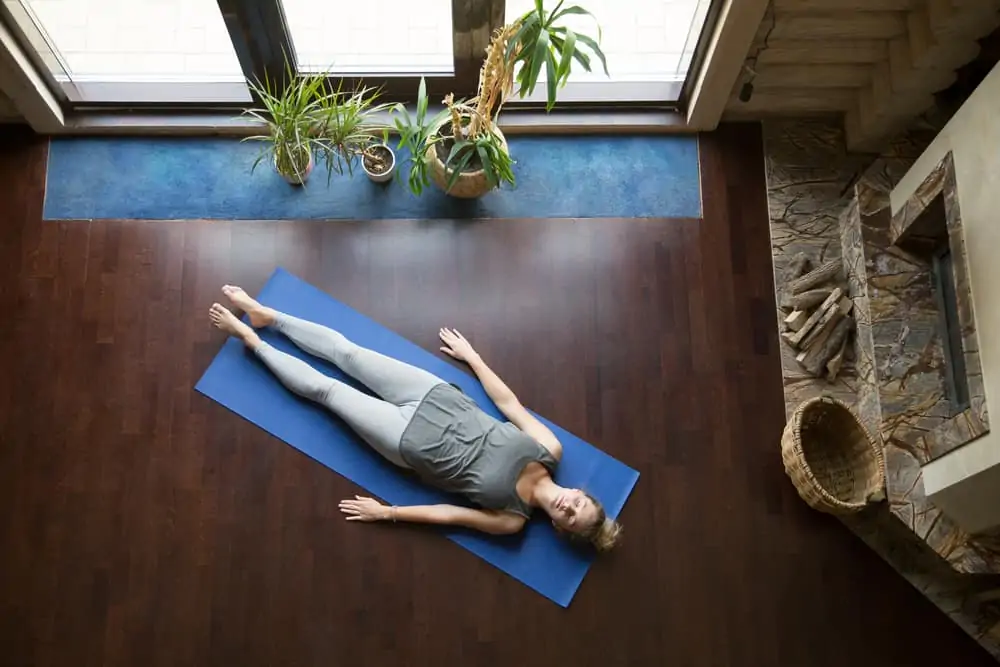
Props for Yoga Nidra
Props aren’t necessary for Yoga Nidra, however, they may be helpful to make yourself completely comfortable.
Movement is discouraged in Yoga Nidra to create a very relaxed state.
Lying down or reclining comfortably for total relaxation is usually preferred.
Placing a bolster or pillow under the knees and covering with a blanket are some options to facilitate total relaxation.
When doing Yoga Nidra at home, I use a good pair of headphones to block out environmental distractions.
Where to find Yoga Nidra
Some studios have Yoga Nidra offerings, but I’ve found the best place to do Yoga Nidra is at home.
My favorite YouTube channel is Ally Boothroyd. She has a ton of Yoga Nidra practices from 10 minutes to an hour so you can get the relaxation you need when you need it.
Yoga Download also has Yoga Nidra classes and programs in addition to other styles of yoga so you can keep all your offerings in one place.
Save 50% off Yoga Download Monthly Online Yoga Packages here.
Wrapping up
Incorporating yoga for relaxation into your routine can help significantly support stress management and a healthy lifestyle.
All three of these styles can also be used as “bedtime yoga” to help relax the body for sleep.
Whatever yoga style you choose, enjoy adding some relaxation to your week!
REFERENCES
Corey SM, Epel E, Schembri M, et al. Effect of restorative yoga vs. stretching on diurnal cortisol dynamics and psychosocial outcomes in individuals with the metabolic syndrome: the PRYSMS randomized controlled trial. Psychoneuroendocrinology. 2014;49:260-271. doi:10.1016/j.psyneuen.2014.07.012
Daukantaitė D, Tellhed U, Maddux RE, Svensson T, Melander O. Five-week yin yoga-based interventions decreased plasma adrenomedullin and increased psychological health in stressed adults: A randomized controlled trial. PLoS One. 2018;13(7):e0200518. Published 2018 Jul 18. doi:10.1371/journal.pone.0200518
Ferreira-Vorkapic C, Borba-Pinheiro CJ, Marchioro M, Santana D. The Impact of Yoga Nidra and Seated Meditation on the Mental Health of College Professors. Int J Yoga. 2018;11(3):215-223. doi:10.4103/ijoy.IJOY_57_17
Moszeik, E.N., von Oertzen, T. & Renner, KH. Effectiveness of a short Yoga Nidra meditation on stress, sleep, and well-being in a large and diverse sample. Curr Psychol (2020). https://doi.org/10.1007/s12144-020-01042-2
Woodyard C. Exploring the therapeutic effects of yoga and its ability to increase quality of life. Int J Yoga. 2011;4(2):49-54. doi:10.4103/0973-6131.85485

